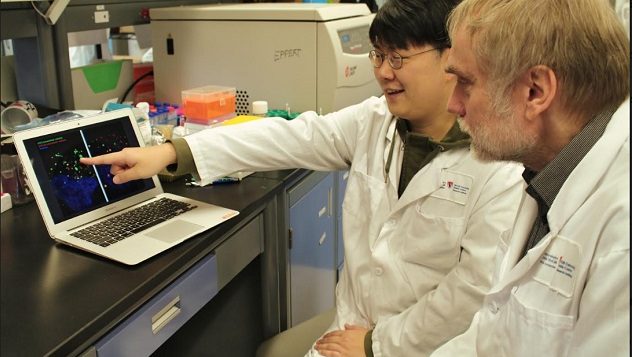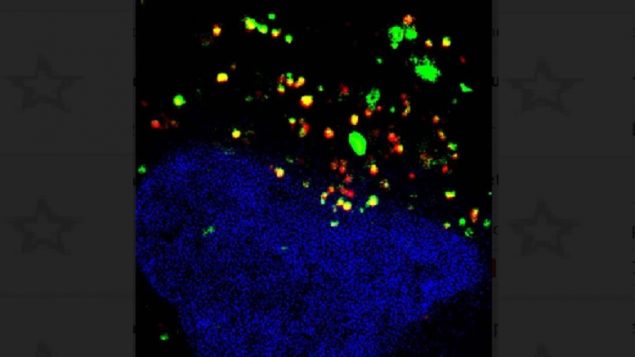Discovering how cancer cells communicate and spread
Researchers in Montreal have found that cancers “communicate” with other cells. They discovered a mutation in a gene present in cancer patients with “glioblastoma”, an aggressive form of brain cancer. The gene can change the messages sent to other cells and cause them in turn to become cancerous.
Dr Janusz Rak (PhD, M.D) is a senior scientist in the Child Health and Human Development Program of the Research Institute of the McGill University Health Centre (RI-MUHC) and a professor in the Department of Paediatrics, Division of Experimental Medicine at McGill University.
ListenWhat they discovered was a mutated form of the gene, “epidermal growth factor receptor”, that controls growth behaviours and how it is transmitted to other cells.
The study The Impact of Oncogenic EGFRvIII on the Proteome of Extracellular Vesicles Released from Glioblastoma Cells, was co-authored by Dongsic Choi, Laura Montermini, Dae-Kyum Kim, Brian Meehan, Frederick P. Roth and Janusz Rak. (abstract HERE)

Postdoc researcher and co-author Dongsic Choi (L) and Dr. Janusz Rak, at the Dr.Rak Lab at the Research Institute of the McGill University Health Centre (RI-MUHC)
The mutated gene EGFRvIII (variant 3) was not only present in glioblastoma cancer cells, but was released from the cell into the body through extracellular vesicles (EVs) or exosomes, much like an tiny escape pod from a spaceship.
The EVs travel to other cells where they penetrate, deliver their mutated protein cargo “message” and can change the way the cell reacts.
Normally EGFR’s need to be triggered to react, but the mutated form does not need a trigger and in fact is always “on” resulting in abnormal cell growth.
It is in part the discovery of the role of these exosomes in spreading a distorted message, as well as the mutated genes themselves that is the step forward.
The discovery was made possible through the acquisition of a new piece of technology called a nano-flow cytometer. Although it uses lasers and reading of different frequencies of reflected light, and nothing at all like a super microscope, in effect it acts like a super microscope. It allows them to see individual exosomes and their variations to determine if they carry mutated proteins or not.
This work was supported by a grant from the Canadian Institute of Health Research (CIHR) and the Canadian Cancer Society Research Institute (CCSRI), and by the Montreal Children’s Hospital Foundation.







For reasons beyond our control, and for an undetermined period of time, our comment section is now closed. However, our social networks remain open to your contributions.